
Eurya japonica, known as East Asian eurya, is a 1–3.5 m tall shrub in the Pentaphylacaceae family found in eastern China, Korea, and Japan. It is used as an ornamental plant. In shinto it is a sacred tree, whose leaves are used as sacrificial offerings.
Eurya rapensis is a species of plant in the Pentaphylacaceae family. It is endemic to the island of Rapa Iti, in the Tubuai Islands of French Polynesia.

Eurya is a genus of about 70 species of flowering plants in the family Pentaphylacaceae.
Eurya rengechiensis is a species of plant in the family Pentaphylacaceae. It is endemic to Taiwan and found only near Taichung. Eurya rengechiensis is an evergreen small tree.
Eurya sandwicensis, the ānini or wānini, is a species of flowering plant in the family Pentaphylacaceae, that is endemic to Hawaiʻi. It is threatened by habitat loss.

HMS Moth was an Insect-class gunboat of the Royal Navy. Entering service in 1916, Moth had a varied career with service in the Middle East, the White Sea and the Far East in two world wars. Scuttled in World War II during the invasion of Hong Kong, the ship was raised and put into service by the Imperial Japanese Navy as Suma (須磨). The ship remained active throughout the war, before striking a naval mine in the Yangtze River in 1945 and sinking.
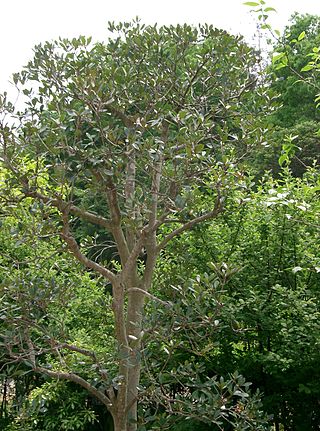
The Pentaphylacaceae are a small family of plants within the order Ericales. In the APG III system of 2009, it includes the former family Ternstroemiaceae.
E. japonica may refer to:
Lyonetia euryella is a moth in the family Lyonetiidae. It is known from the islands of Honshu, Kyushu and Yakushima in Japan.
Borboryctis euryae is a moth of the family Gracillariidae. It is known from Japan.
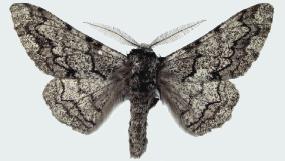
Biston robustum is a species of moth belonging to the family Geometridae. This is a large moth and is known in its native range as the giant geometer moth. It is related, and generally similar, to the famous and widespread Peppered Moth.
Pierre Joseph Eyma was a Dutch botanist.

The Southern Korea evergreen forests is a temperate broadleaf and mixed forests ecoregion at the southern end of the Korean Peninsula.
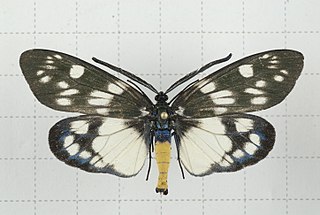
Eterusia aedea, the red slug caterpillar, is a species of moth in the family Zygaenidae. It was described by Carl Linnaeus in his 1763 Centuria Insectorum. It is found in Sri Lanka, India, Nepal, Taiwan, Japan and China.
Pasiphila excisa is a moth in the family Geometridae. It was described by Arthur Gardiner Butler in 1878. It is found in Russia, Japan and Korea.

Tobishima (飛島), is an inhabited island located in the Sea of Japan, administered as part of Sakata, Yamagata Prefecture, Japan. The island, 2.75 km² in area, had 275 inhabitants as of 2005. The island has no airport, and access is normally by ferry to the city of Sakata on the mainland. The islanders are dependent mainly on commercial fishing and seasonal tourism.

Homona magnanima, the Oriental tea tortrix moth, is a species of moth of the family Tortricidae. It is found in Japan, Taiwan, China and Vietnam.
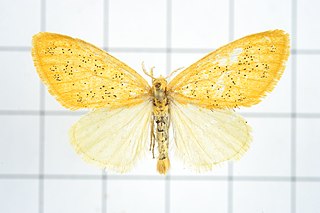
Euproctis pulverea is a moth of the subfamily Lymantriinae first described by John Henry Leech in 1888. It is found in Japan, Korea and Taiwan.

Celastrina oreas is a small butterfly found in the East Palearctic that belongs to the lycaenids or blues family.
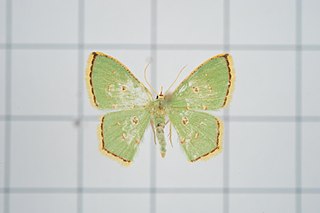
Comostola subtiliaria is a moth of the family Geometridae first described by Otto Vasilievich Bremer in 1864. It is a widespread species which is found in Korea and adjacent parts of Siberia, Japan, Borneo, Sumatra, India, South China, Taiwan, Borneo, Sumatra, and Sri Lanka.










